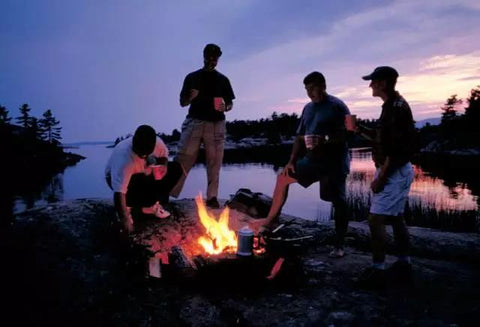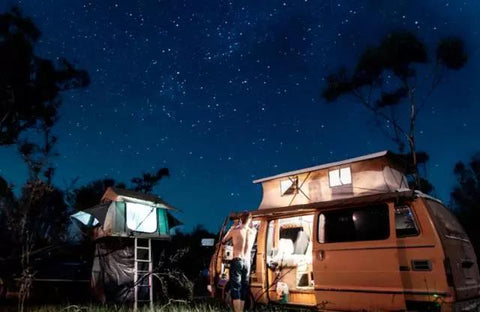Camping, all you need to know is here
Being in the nature and counting stars with family and friends in the bright moonlight, this artistic conception has already intoxicated people. With the coming of summer, many New Zealand outdoor camping enthusiasts can't wait to join in the nature. However, the risk factor of outdoor camping is high. Before starting, you must be prepared enough to enjoy the perfect national parks.

In order to enjoy the time in the wild, please follow us to pick up the camping tips.
Tent: double layer tent with stable structure, light weight, strong wind resistance and rain resistance is preferred
Sleeping bag: down or velvet sleeping bag is light and has good heat preservation effect, but the premise is that it must be kept dry. When the environmental conditions are relatively wet, artificial vacuum cotton sleeping bag may be a better choice.
Damp proof pad: cold and damp proof. The simplest is foam moisture-proof pad, aluminum film, wear-resistant layer, wave type optional. Automatic air cushion has better performance as long as you can carry it.

Backpack: the backpack frame shall conform to its own body structure, and shall be equipped with comfortable carrying system (such as shoulder belt, belt, back plate)
Rain gear: it's best to wear the waterproof and breathable fabric, not the thick rubber raincoat.
Lighting appliances: camp lamp (divided into electric camp lamp and gas camp lamp), headlight and flashlight
Special tools: compass, map, rope, folding spade, needle and thread, fishhook and fishline, machete, camera
Water and food: high calorie meat, sugar, lipid and salt
Shoes: in the wild, there are many gravel roads, and the sole should be thick and hard, not too thin or easy to blister. It's better to wear outdoor shoes, such as sports shoes, above the middle sole. When there is water, you can bring a pair of release shoes or beach shoes.
Clothes: changed clothes. Cold proof down jacket, rainproof and windproof coat, cotton socks.
Key points of site selection
The ground should be flat: when camping, it is a good place to build a camp on the layers of fallen leaves in the deciduous forest or the pine needles covered with coniferous forest, on some mineral rich soil, on the sand beach or gravel pile beside the water flow, because these places are very flat. When people lie on the damp proof mat, they will find it much more comfortable to sleep on the hard and flat ground than on the soft but uneven ground.
Higher terrain: if you have different altitudes to choose from, the ideal location should be windproof and rainproof, where mountain torrents can not be flooded, and where there will be no threat of falling rocks and avalanches.
Safety above: if your camp is built in a place where falling rocks, landslides, avalanches and mudslides may occur, it will take a lot of risks. If you have to camp in these places, you should at least avoid the low-lying areas at the foot of the mountain and the places where these things pass directly. When looking for a place to build a tent in the woods, you should avoid the dead trees that have begun to fall branches. A heavy rain or a little wind may make them fall down. In addition, it is necessary to observe whether there are large honeycombs around.

Good drainage: the drainage performance is very important when choosing the camp, especially when there may be heavy rain. Not only should low-lying areas be avoided, but also completely flat ground should be avoided. In particular, there is no gap in the ground which is very solid, and this kind of ground will lead to no place for rainwater to flow and is not easy to penetrate into the ground. At the end of the dry season, don't camp on the dry cobblestone river. A rainstorm may turn these places back into a wide river. When traveling in mountainous areas, it is more important to find the highest water level that the flood may reach.
Avoid mosquitoes: when choosing campsites, you should be careful not to choose stagnant water ponds, dense grasslands and places where water may accumulate. This is where mosquitoes breed.
Near water: The camp should choose a place close to the water source, which can not only ensure the water for cooking and drinking, but also provide water for washing and rinsing. If it is far away from the water source, it will bring a lot of inconvenience, even danger to the camp. But in the deep mountains and dense forests, wild animals will be encountered near the water source, so special attention should be paid.

Leeward wind: The wind will quickly take away the heat of human body, make people cold, and even cause disease. At the same time, the wind will take away the tent, at least it will make people unable to rest. It is more difficult to light a bonfire, and it is difficult to ensure cooking and heating, so the camp must avoid the wind. It is better to be in the leeward part of the hill, in the forest or in the open space beside the forest, in the cave, on the side of the ridge and under the rock, etc.
Sunshine: The camp should be located in a place with long sunshine as much as possible, which will make the camp warm, dry and clean, and facilitate the drying of clothes, articles and equipment.
Set up a tent:
- Tents should be built on hard and flat ground as much as possible, not on riverbanks and dry river beds.
- The entrance of the tent shall be leeward, and the tent shall be far away from the hillside with rolling stones.
- In order to prevent the tent from being flooded when it rains, a drainage ditch should be dug directly under the side line of the canopy top.
- The four corners of the tent should be pressed with big stones.
- Air circulation shall be maintained in the tent, and cooking in the tent shall be prevented from fire.
- Before going to bed at night, check whether all the flames have been put out and whether the tent is fixed and firm.
- To prevent insects from entering, sprinkle a circle of kerosene around the tent.
- It's better to face south or southeast of the tent and see the sunshine in the early morning. The camp should not be on the ridge or the top of the mountain.
- At least there should be a groove. Don't put it beside the stream, so it won't be too cold at night.
- The campsite is selected in sand, grassland, rock debris and other well drained campsites.

Five rules for sleeping in camping:
- Fluffy degree of sleeping bag: the fluffy degree of the new sleeping bag is slightly poor. It is better to spread the sleeping bag to make it fluffy after setting up the tent. Of course, the longer the time is, the better the heat insulation performance is.
- Complete waterproof: if there is no waterproof sleeping bag cover, it can be replaced by a large garbage bag. The window of the tent must be slightly opened to let the tent ventilate. When it is sunny after the rain, the sleeping bag must be taken out and dried.

- Wear enough clothes: put on enough clothes when you go to bed. It's better to wear a hat, because half of the body's heat energy dissipates from the head.
- Satiety: don't eat on an empty stomach before going to bed. Eat some high calorie food. At the same time, sufficient water is very important for the metabolism function of human body. Drink more water.
- Warm up: don't get into the sleeping bag immediately when you arrive at the camp. The sleeping bag is useless for the body that is too hot and too cold.



